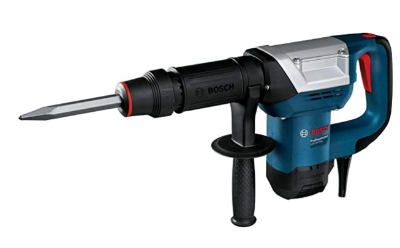What Is a Sledgehammer?

A sledgehammer, often referred to as an electric hammer or pick, is a powerful tool used for breaking concrete and other hard materials. Despite its name, it is versatile and can adapt to various tasks—such as driving pipes, digging, and paint removal—by changing the tip tool.
Its ability to demolish hard concrete structures, which electric drills struggle with, makes it a vital tool on construction sites.
Uses of Sledgehammers
Sledgehammers excel in breaking concrete, making them essential for road construction, electrical work, and demolition tasks. They are also used for:
- Road surfacing
- Concrete structure demolition
- Creating holes in electrical outlets
- Landscaping and ground excavation
- Stonework
- Tile and brick removal
Structure of Sledgehammers
A sledgehammer consists of a main body and a blade, either a bull point or chisel, usually powered by electricity. It operates on the principle of applying a strong, downward force to break through concrete or stone, similar to manual chiseling. Some models feature a low-vibration mechanism to reduce operator fatigue and prevent vibration-related injuries.
How to Select Sledgehammers
Consider the following when choosing a sledgehammer:
1. Shaft Standard
The tool’s shank, or shaft, varies by product. Hexagonal shafts offer a secure grip, preventing slippage, while SDS-MAX and SDS-Plus shafts, developed by Bosch, cater to different size requirements and applications. Ensure compatibility with the hammer’s body before purchase.
2. Striking Force
Striking force ranges from 6 J to 70 J. Select a hammer that balances power with manageability to avoid undue fatigue, based on the task at hand.
3. Power Source
Choose between power-operated and battery-powered models based on usage needs. Given the high power consumption of sledgehammers, power-operated types are recommended for prolonged use.
Other Information on Sledgehammers
Precautions for Operating Sledgehammers
- Wear protective glasses and a dust mask, and use ear protection in noisy environments.
- Verify that the power source matches the hammer’s specifications to avoid injury from excessive speed.
- Avoid electrical shock by not contacting grounded surfaces during use.
- Check for buried cables and pipes before drilling into walls, ceilings, or floors.
- Wear appropriate clothing to prevent accidents caused by entanglement in the tool.